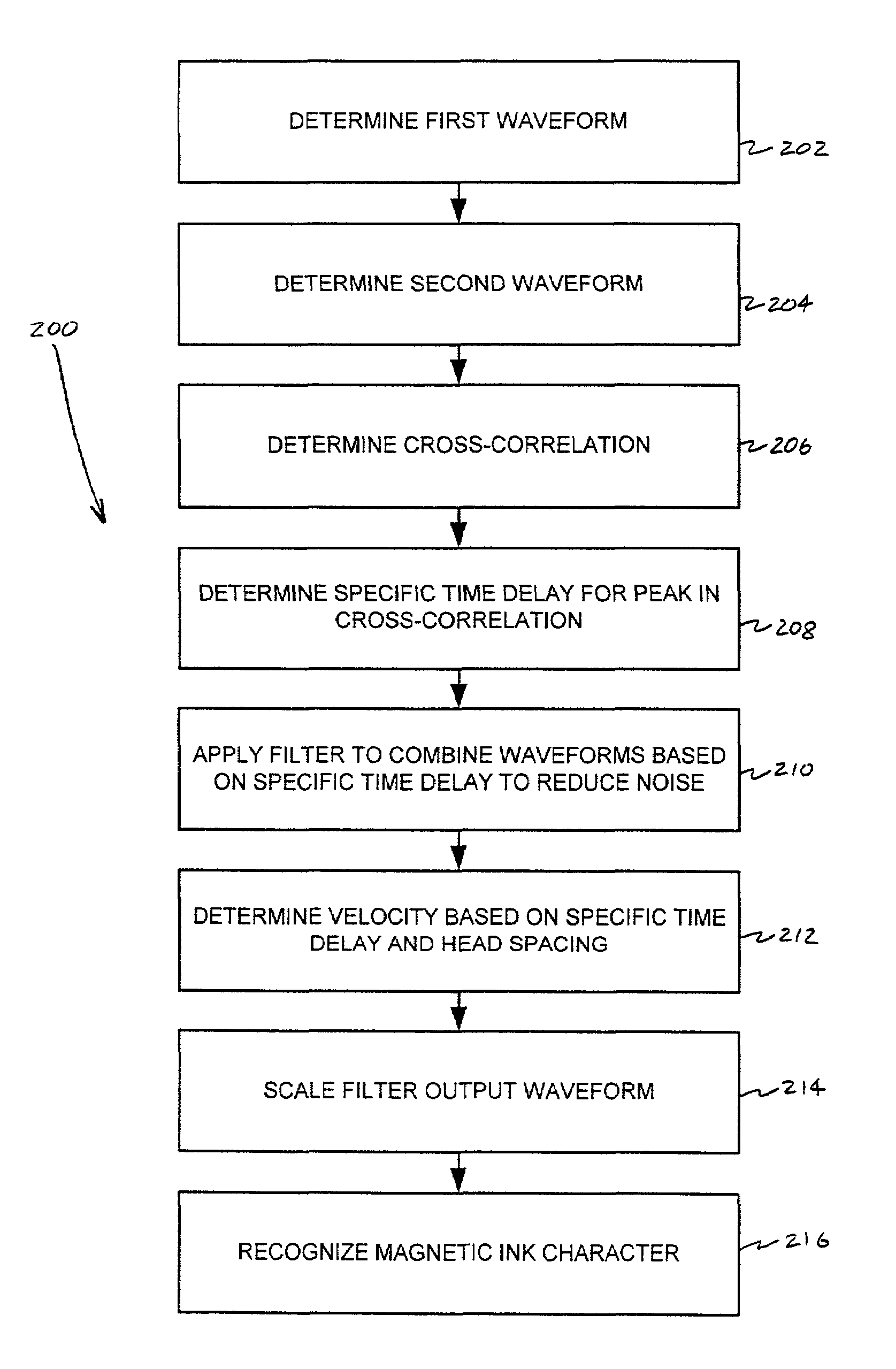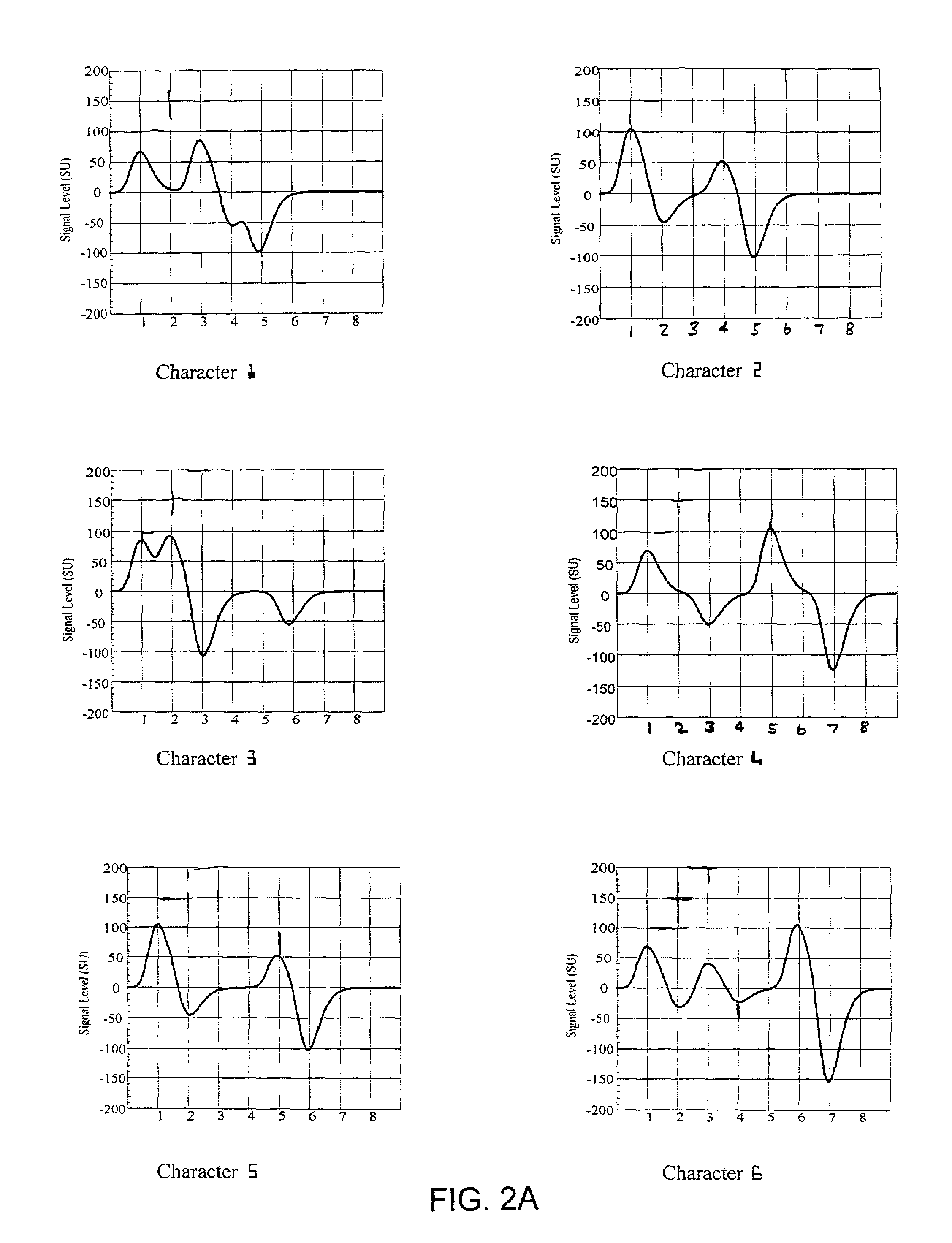System and method of signal processing for use in reading data
- Summary
- Abstract
- Description
- Claims
- Application Information
AI Technical Summary
Benefits of technology
Problems solved by technology
Method used
Image
Examples
Embodiment Construction
[0029]FIG. 1 is the E-13B character set containing ten characters and four symbols as defined in the American National Standard X9.27-2000 “Print And Test Specifications For Magnetic Ink Printing (MICR)” as promulgated by the American Bankers Association. When used on a document for automated machine reading, the characters and symbols in the set must be printed using magnetic ink. ANS X9.27 defines the dimensions of each character / symbol and the expected nominal waveform peak position and relative amplitude of waveform peaks.
[0030]FIGS. 2A, 2B and 2C demonstrate the waveform details of each of the characters / symbols shown in FIG. 1 when each character / symbol is moved past a single gap magnetic read head at a given constant velocity. In most applications, the characters are first magnetized prior to the characters being presented past the read heads. As shown, each unit on the x-axis represents 0.013 inches. The first character peak is aligned with the first position and the remaini...
PUM
 Login to View More
Login to View More Abstract
Description
Claims
Application Information
 Login to View More
Login to View More - R&D
- Intellectual Property
- Life Sciences
- Materials
- Tech Scout
- Unparalleled Data Quality
- Higher Quality Content
- 60% Fewer Hallucinations
Browse by: Latest US Patents, China's latest patents, Technical Efficacy Thesaurus, Application Domain, Technology Topic, Popular Technical Reports.
© 2025 PatSnap. All rights reserved.Legal|Privacy policy|Modern Slavery Act Transparency Statement|Sitemap|About US| Contact US: help@patsnap.com



